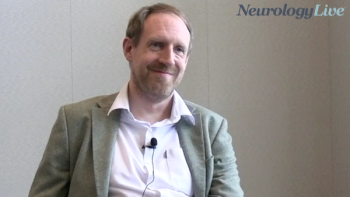
Emerging Therapies in Myasthenia Gravis
Panelists discuss how emerging treatments include cladribine (oral B and T cell targeting), telitacicept (BAFF/APRIL inhibition), remibrutinib (BTK inhibition), POSI (combination complement inhibition), chimeric antigen receptor (CAR) T-cell therapies, and tolerance-inducing approaches that may offer more durable responses and potentially curative treatments.
Episodes in this series

Several promising therapies are advancing through clinical development pipelines, offering hope for expanded treatment options and improved outcomes in myasthenia gravis. Cladribine, an oral therapy targeting actively proliferating B and T cells previously used in oncology, shows promising preliminary data in injectable form and is advancing to larger oral drug studies. This comprehensive upstream mechanism affects both cellular components involved in autoimmune pathogenesis but requires monitoring for myelosuppression and hepatotoxicity given its broader cellular targeting approach.
Telitacicept, a BAFF and APRIL inhibitor preventing B-cell activation, demonstrated remarkable 98% responder rates in Chinese population studies, though the minimal placebo response raises questions about study design and generalizability to Western populations. Remibrutinib, a BTK inhibitor available as oral therapy, targets B-cell activation and differentiation pathways and shows promise across multiple autoimmune conditions including neuromyelitis optica and multiple sclerosis, with ongoing myasthenia gravis trials.
Advanced experimental approaches include CAR T-cell therapies, with both DNA-based CD19-targeting and safer messenger RNA approaches showing dramatic efficacy in small patient numbers. The messenger RNA CAR T-cell approach avoids lymphodepletion requirements and demonstrates durable responses lasting 18 months to 2 years with potential for retreatment. Tolerance-inducing therapies targeting antigen-presenting cells and the main immunogenic region of acetylcholine receptors represent the ultimate therapeutic goal of achieving one-time curative treatments, with phase 1 trials beginning in 2025. These developments suggest a future where myasthenia gravis could potentially be cured rather than chronically managed.
Newsletter
Keep your finger on the pulse of neurology—subscribe to NeurologyLive for expert interviews, new data, and breakthrough treatment updates.
































